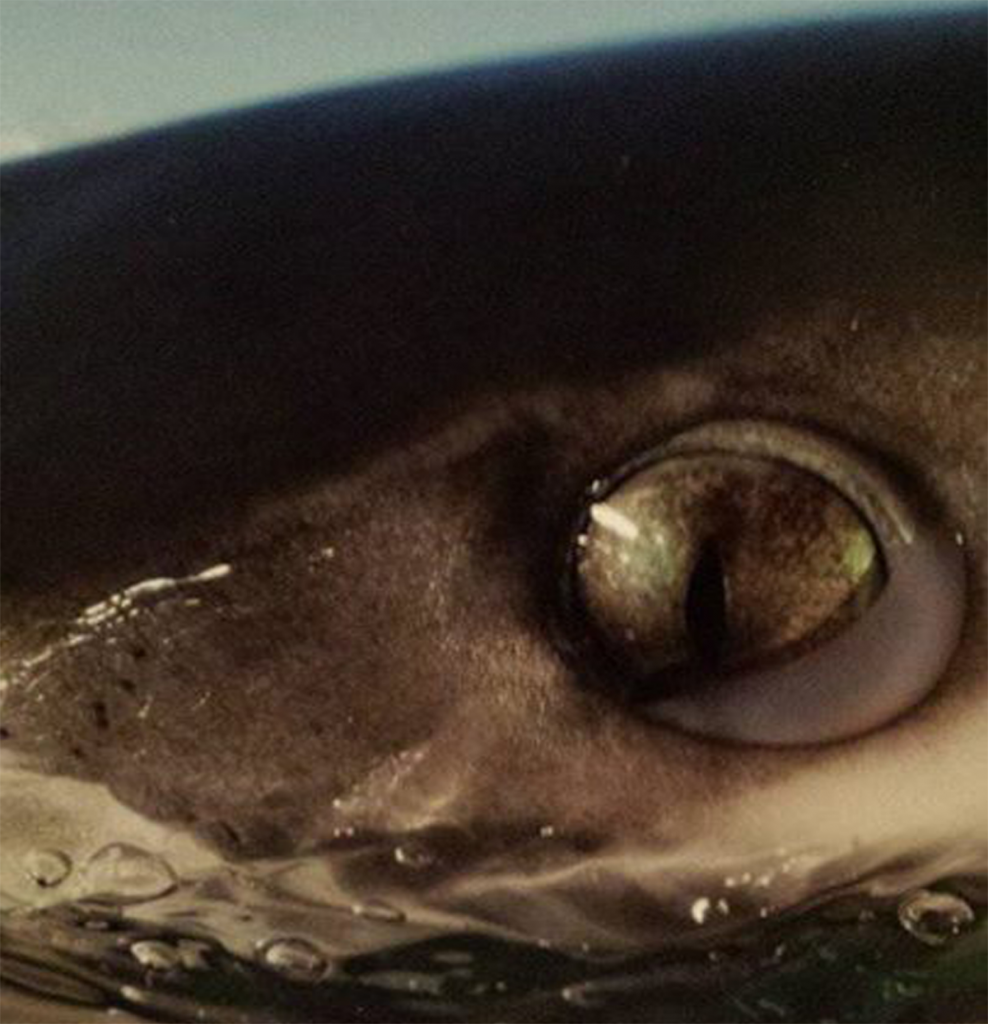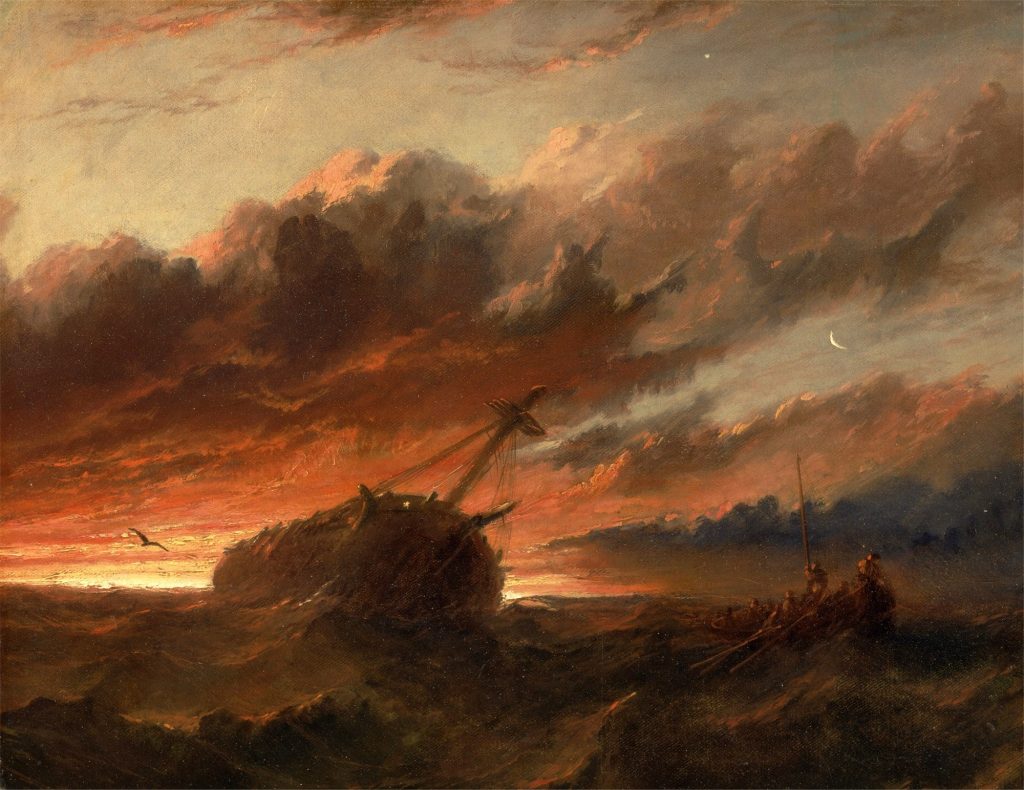
The sea, the sea (Θάλαττα! θάλαττα!
Although Rachel Carson is known primarily for her revolutionary monograph, Silent Spring (1962), often credited with stimulating the early environmental movement, she also produced three volumes of nature writing about the sea before this: Under the Sea-Wind (1941), The Sea Around Us (1951), and The Edge of the Sea (1955). These texts engage descriptively with the ocean as an alien, rich habitat, tracing both the protean history of the ocean itself and the lives and passages of sea creatures as they flee, hide, hunt, mate, and migrate.
Particularly in the case of Under the Sea-Wind, Carson follows several creatures – a black skimmer, a mackerel, an eel – as they traverse the oceanic milieu. Her narratives avoid merely anthropomorphizing these creatures, and she also refuses to romanticize their conflicts and struggles. In the second volume, The Sea Around Us, Carson addresses her prose to the sea as an originary site for life on earth, dramatizing both the Earth’s evolutionary and hydrological past and the current state of its oceans as they teem darkly with competition, fertility, and violence. Last, throughout The Edge of the Sea, Carson turns her attention to the big and small details of ecotones, drawing parallels between the paradigmatically transitional zone we call the seashore and the very conditions of possibility for life itself.
Thematically, numerous commentators have located in Carson’s writings on the sea what sometimes gets called a “sea ethic,” which either exceeds or parallels Aldo Leopold’s land ethic. For example, Susan Power Bratton draws attention to how, for Carson (unlike in Leopold’s example of the land community), “we are not fully integrated members of the sea community.” Even as we sail out over the depths, or penetrate them with sonar and submarines, we remain functionally terrestrial animals, our liquid origins in Darwin’s “warm little pond” notwithstanding. For Bratton, the significance of this lies in Carson’s acknowledgement and respect of the limitations of human affective and practical perception.
Accordingly, the sea functions both as a condition of possibility (for it is both “the place of our dim ancestral beginnings” and that which “encircles” humanity today) and a limit condition for the human as such. You could say the sea figures as a kind of great, sloshing pharmakon. Hence Bratton’s (and, indeed, Carson’s) emphasis on ecotonality – on the ways in which boundaries, just like seashores, both distinguish and separate ecological contexts from each other and yet, paradoxically, also enable absolutely all contact between them. Boundaries divide things, yes, but boundaries are also unique sites of connection and transit that participate of both adjacent entities (be they biomes, bodies, or states).
This point is fundamental for Carson: for contact or encounter to be possible, to take place at all, there must be degrees of real, material separation.
The shipwreck
In his Shipwreck with Spectator: Paradigm of a Metaphor for Existence (1979/1996), Hans Blumenberg traces the transformations in Western “nautical metaphorics,” that is to say, the sprawling, complex set of metaphors drawing upon the imagery of “coasts and islands, harbors and the high seas, reefs and storms, shallows and calms, sail and rudder, helmsmen and anchorages, compass and astronomical navigation, lighthouses and pilots.” For Blumenberg, this mutating assemblage of interrelated metaphors provides a rich symbolic space in which claims, distinctions, and meanings get made. Thinking takes place by means of metaphors, dead or otherwise. Blumenberg gives special attention to a conceptual formation he calls “the shipwreck with spectator,” a metaphor that recurs again and again throughout the Western archive, in which the terrestrial conditions of the human are established and secured via the observation of a shipwreck. This formation serves as perhaps the paradigmatic example of the destruction of a uniquely human project.
Blumenberg’s point is both methodological and philosophical. On the one hand, nautical metaphorics are productive, provocative, rife with shades of meaning. For him, such metaphors preserve and sustain crucial distinctions latent in the Western imaginary (e.g., between land and sea, the motile and stable, the passage and its navigation, etc.). On the other hand, Blumenberg privileges spectating the shipwreck, both as a pragmatics of self-preservation (i.e., one picks through the catastrophe from a distance, by observing it) and as a testament to the survivability of tragedy. (As the translator, Steven Rendall, writes in his introduction to Blumenberg’s text, “the prospect of shipwreck looms ever on the horizon, and pursuing the project of human self-assertion in our present situation means being prepared to abandon whatever patched-up craft is currently bearing us across the turbulent seas of existence, in order to leap into the waves and begin, again and again, the task of constructing a new vessel from the materials at hand – including, perhaps, the debris from earlier shipwrecks.”)
Bearing this conceptual and historical framework in mind, direct your attention, then, toward a striking image, that of the shipwreck of the Mary B., found in Carson’s Under the Sea-Wind.
In the text, the shipwreck of Mary B. has already taken place. For Carson, the shipwreck is not an event, but a site: “The Mary B. still lay on the sands, which had sunk away beneath it. Weeds grew from her spars and her masthead, and their long green tapes streamed into the water, pointing landward on the flood tides and seaward on the ebb.” Carson goes out of her way to describe this emplacement as a feature of the marine context. Not only does the shipwreck of the Mary B. host undersea vegetal life, but it also serves as a habitat for a whole ecosystem of other living creatures, too: “the windows were used as passageways by all the small fishes that lived about the wreck […] Silvery lookdown fish, spadefish, and triggerfish moved in endless little processions in and out of the windows.”
Although the Mary B. is characterized as “an oasis of life,” it is also a site of death. Not only does its very presence embody the failure of predatory human ambition, but it also serves as both a graveyard (“The hold was half-full of the crab-cleaned skeletons of the fish that had not washed out of the hold when the vessel sank”) and a hunting ground for the wreck’s larger hunters: “a dark form clambered out of the hold. The creature was a large octopus who lived in the fishhold of the Mary B.” The octopus is soon joined by a lobster and an anglerfish, both of whom reside in the shipwreck, who make it their haunt.
Not only is Carson providing a detailed description of the ways in which abandoned human structures become sites of ecological renaissance – that is, through processes of feral reclamation and rewilding – but she also reflects metaphorically upon the relationship between the human and the sea, this alien, yet intimate, ecological context that holds so much interest for her. In this regard, her use of the Mary B. as a murky metaphor belongs in the metaphorological tradition that Blumenberg draws our attention to.
At stake here is not merely the fact that Carson is participating in an ancient discursive tradition, but, rather, how she structurally transforms the metaphor in question. At no point in her description of the shipwreck does Carson refer to the human explicitly (e.g., the fate of the crew goes unremarked upon), and yet it is precisely human ambition and intervention, as well as its faltering, that makes the site possible in the first place. In other words, Carson includes the human within her ecological vision by virtue of its exclusion – the shipwreck of the Mary B. serves as the repurposable material remainder of that exclusion. In this way, Carson actually foregrounds the distinctly human impress of the very notion of ecological vision as such.
In other words, Carson transubstantiates a site of apparent or potential tragedy into an ambiguously vital ecology, a new mode of the commune perfugium. At first glance, the shipwreck seems bereft of the human – testifying to our failures, perhaps, or to our hubris – and yet Carson draws the very human reader back in, implicating both herself and that reader – this means you – in the ecological site, thereby enabling a new form of human life to take place right there in its encounter with the text.
Dark anthropocentrism
From this metaphor in Carson, we can derive a recuperated form of anthropocentrism. Call it dark anthropocentrism. Of course, anthropocentrism refers to centering our practical or theoretical perspective upon the human in some fashion. Many ecological theorists (from Lynn White Jr. to Donna J. Haraway) argue that anthropocentrism in one form or another is the direct cause of the ecological crisis. At the same time, as J. Baird Callicott and others note, there is something inescapably tautological about the concept of anthropocentrism: “All human experience, including all the ways that human beings experience value, is human experience and therefore tautologically anthropocentric. Tautological anthropocentrism is humanly inescapable.”
My proposal, then, is all but guaranteed to make almost everyone distinctly unhappy – and it’s a good thing, too. Critics of anthropocentrism will be unhappy because I am proposing a reclamation of anthropocentrism in the first place, while unreconstructed anthropocentrists will be unhappy because of the degree to which I am arguing that we are able to conceive the category of the distinctly human only in terms of its constitutively inhuman penumbra.
In other words, dark anthropocentrism is anthropocentrism because it is concerned primarily with the human subject, and it is dark because the distinctly human subject is possible only on the basis of its fundamentally inhuman ecological and material conditions. Indeed, this is an insight that has haunted the ecological tradition since its inception. (For example, when Leopold refers to “that dark laboratory we call the soil,” he is underscoring the degree to which our relationship with the land community is precisely what makes possible the development and exercise of ecologically informed judgment in the first place.)
First, then, the idea of a dark anthropocentrism casts doubt on the coherence of the claim that all human experience is, in fact, human experience at all. Perhaps this sounds contradictory at first, but once we consider the constitutively plural conditions within which the subject emerges, much less the ecotonal patchwork every subject is, we realize that “human experience” actually consists of a rather wide range of experiences, registered by different companion ecologies at different material and temporal scales. Hence, the “darkness” implicit to the form of anthropocentrism I describe.
However, this in no way implies that what is distinctly human disappears. To the contrary, it is because the conditions of the distinctly human subject are themselves inhuman that the human subject becomes possible. This is the theoretical point at which we can embrace a new anthropocentric mode of practice and theory, one that opens up the complex, contingent categories of description and prescription necessary to register ourselves and the ecologies around us.
Dark anthropocentrism is dark because it achieves its focus on the human by decentering the category of the human and showing how that category emerges only within a context provided by its companion ecologies. It is anthropocentrism because, after following this strange loop through to its end, we return to the subject we seemingly had abandoned after all our critical labors. As with our survey of the Mary B., so with the human subject.
In summary, we can reconceive the site of the distinctly human only in terms of its constitutively inhuman conditions. Doing this opens up a new theory of the human subject. It also enables us to take seriously and address, in action and imagination, the ecological crisis as such – both in its own terms and in ours.
